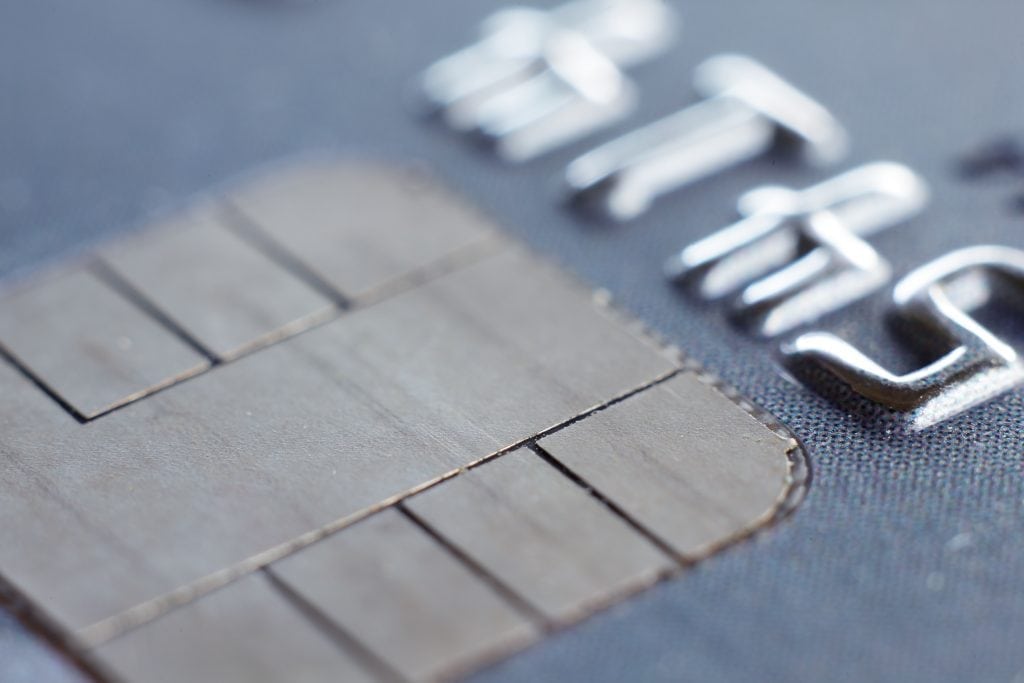3-2-1 We Have Contactless!

by Tina Giorgio
It often seems as though there’s a technology du jour in our industry. As fast as one solution takes center stage, a shiny, new option emerges and all heads turn. This constant over-saturation can leave us struggling to separate the long-term standards from the fleeting fads.
Let me cut through that clutter to disclose one trend that will live up to the hype: contactless payments.
Contactless payments have evolved substantially since Mobil’s “Speedpass” hit the market back in the 90s. We’re no longer looking solely at radio frequency identification (RFID) or near field communication (NFC) enabled plastics. Today, contactless transactions include everything from flashing your watch at the point-of-sale to paying for your groceries, via your refrigerator. As “smart” devices get even smarter and more prevalent, payment has become part of their foundational fabric.
That’s both good and bad for banks. On one hand, it means payments become even more prevalent and seamless. On the other, it brings a whole new cautionary meaning to, “He who owns the payment keeps the customer.”
From my perspective, there are three strategic reasons your bank should consider contactless payments.
- Contactless payments are exploding.Worldwide, contactless payments have soared in recent years. The UK Finance Council notes that, “in just a decade, contactless cards have gone from a niche offering to becoming the first choice payment in all kinds of situations. One out of three card payments is contactless, and between January and June 2017, £23.23 billion ($30+ billion) was spent using contactless.[1]”While contactless hasn’t taken off at similar pace in the United States, new reports indicate we may be on the verge of a contactless payments revolution.According to ABI Research, contactless card shipments, which numbered 25.7 million in 2016, are expected to balloon to 229.6 million in 2021[2], and Visa projects 50 percent of face-to-face transactions will occur at contactless-enabled merchant locations in the U.S. by the end of the year[3]. Already, major retailers like Starbucks and Walgreens, have instituted the technology and have begun driving usage.
So now’s a good time to explore your contactless options. Community banks engaging today will be in the perfect spot to start driving adoption as the technology becomes more widespread.
- You can’t get much more “frictionless.”The “Amazon-ification” of the world has led consumers and businesses to expect simple, seamless payments. They also want choice. Contactless payments offer both.With contactless options, customers can select how they want to pay, how that information is stored (i.e., digital wallet, in-store app, physical wallet, etc.), and when they want to use it. It’s also quick at the point-of-sale and simplifies the purchase process, making for a better, faster, smarter customer experience.Keeping this in mind, community banks can leverage contactless payments as another way to meet their consumers evolving needs.
- Timing is right for a strategic switch.
In addition to the market-driven reasons to explore contactless, there’s an internal driver: the expiration of the first EMV chip cards. With those first cards pushing up against re-issue dates, many large issuers are strategically replacing them with NFC plastics.
If you’re considering making a switch to contactless, EMV card replacement may help you to tie strategic priorities to operational requirements: You are able to reissue the expiring chip card and introduce the contactless technology at the same time.
Global market trends give us a glimpse into our contactless future, and this technology is here to stay. Contactless is a channel to consider as you evaluate your community bank’s payments strategy and technology investments. With roots firmly planted since the 1990s, contactless has revealed itself to be a long-term player, worthy of all community banks’ near-term consideration and deployment.
